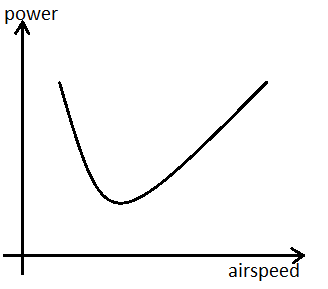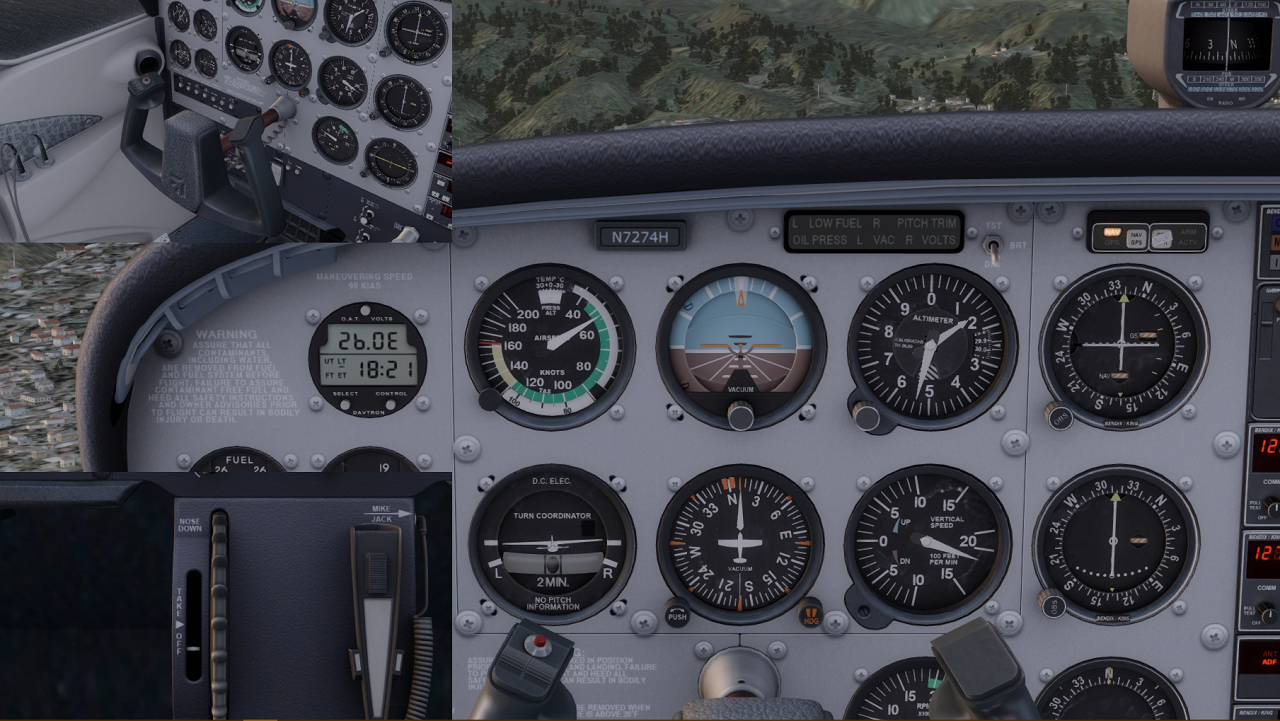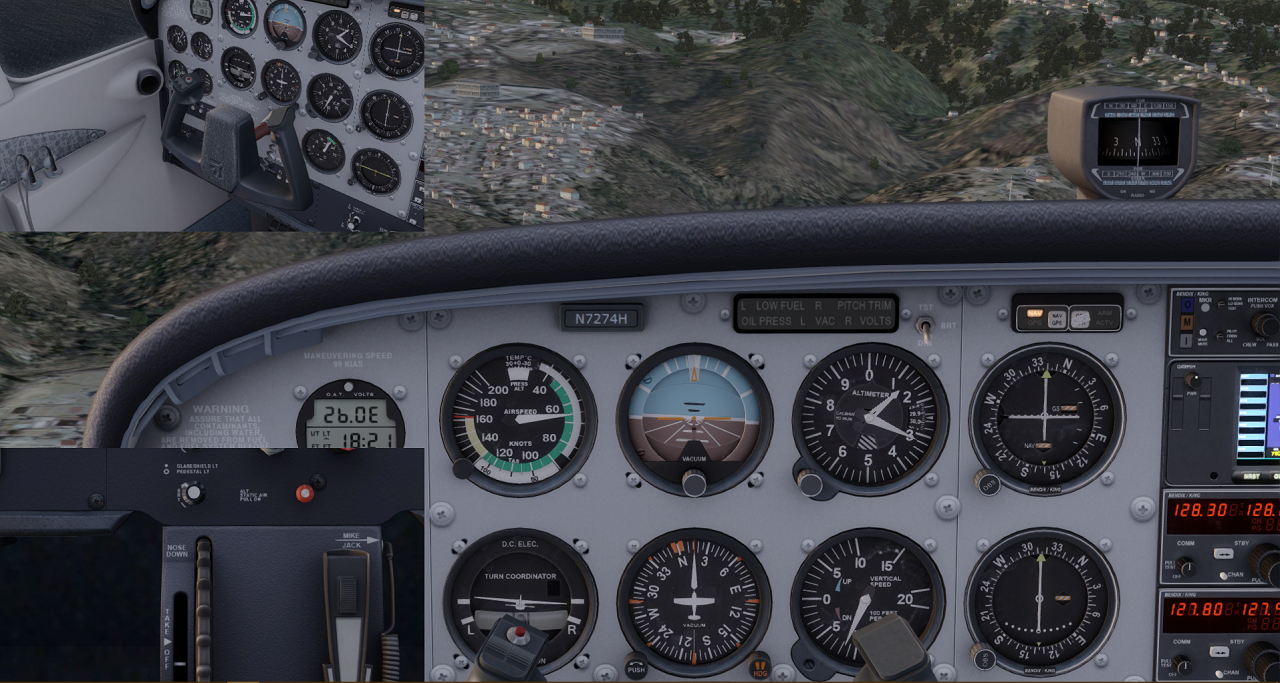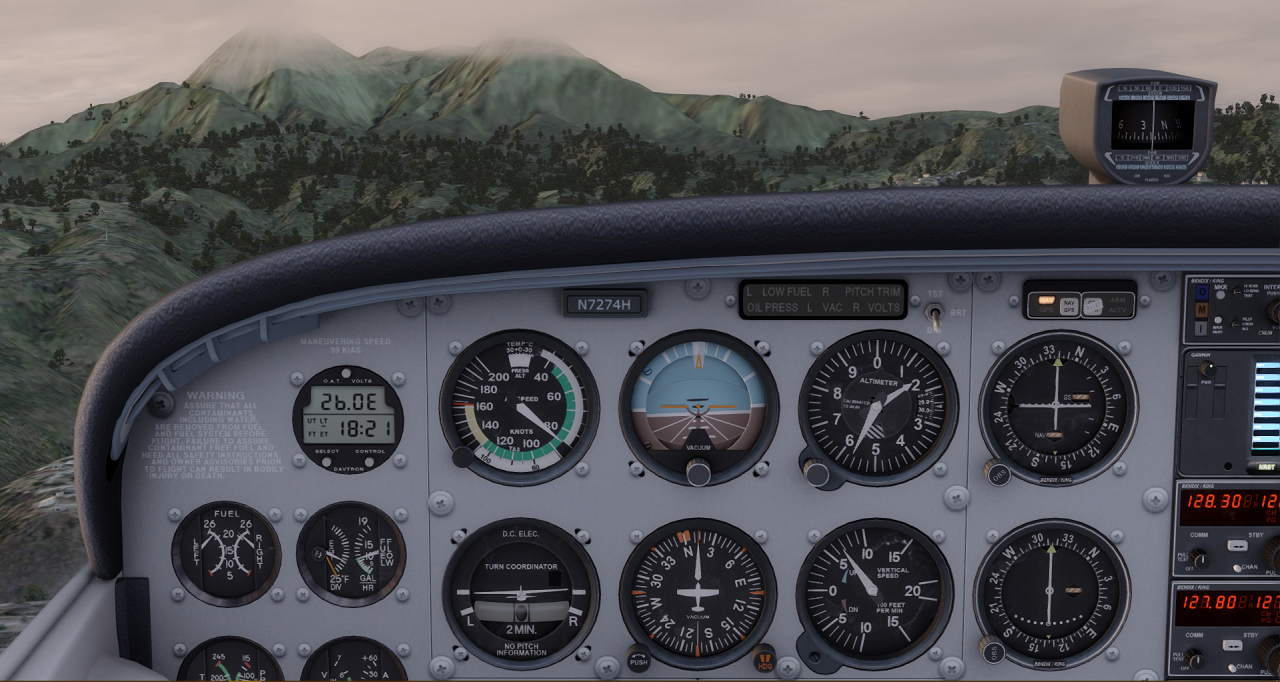¶ Theoretical Knowledge
¶ Flight domain
Your aircraft requires a certain amount of power provided by your engine in order to maintain an airspeed and therefore to generate lift.
One could think that the faster you want to fly, the more power you require.
In fact, the required power will depend on the speed you want to maintain.
The power curve of an aircraft, representing the required power to sustain a given altitude versus the speed of the aircraft, includes:
- A first part in which at low speed, the slower you are, the more power you require
- A second part in which at moderate and high speed, the faster you are, the more power you require
- A limit to distinguish both ranges which is the minimum power speed; which is roughly 1.3 times the
stall speed.

Slow flight is characterized by highly unstable aircraft and poor roll control.
You will that way approach the stall.
¶ Stall
An aircraft is stalling when there is a sudden decrease in the lift generated by an airfoil.
Therefore, as the lift is a function of speed and angle of attack, stall may occur when:
- Airspeed is too low: each aircraft has specific stall speeds determined by the manufacturer.
- Angle of attack is too high: pitch and roll alter the angle of attack of an airfoil.
Dynamic stall is induced by a too high load factor (abrupt attitude change).
Stalling is a dangerous phenomenon happening at excessive pitch or bank angle, or when flying too slowly.
Recognition includes a continuous descent despite a high nose-up attitude, buffet, poor roll control.
Although stalling appears to be a desperate situation where your plane has not enough lift anymore to fly, there is a simple recovery procedure that allows you to regain lift.
Since you need to reduce your angle of attack and increase your speed, you should apply without delay the following procedure:
1. Push on your flight control to have nose-down attitude
2. Only when nose-down attitude is established, full throttle must be applied.
¶ Practical case
¶ Approaching the stall
In this part, we will voluntarily bring our aircraft into a stall and safely recover from it:
- Bring your aircraft in stabilized straight level flight at 90 knots, at least 3,000ft above the ground.
- Then reduce continuously until you come to idle throttle.
- The speed will decrease and you will need to pull the flight control to acquire a higher pitch angle in order to maintain your altitude.
Remember to keep the same altitude the more accurately as possible.
You will experience a full flight control deflection on pitch axis and suddenly, you will begin to lose altitude with a high pitch-up attitude: at this very moment you are stalling.
The vertical speed indicator will show that you are descending.

It is critical to maintain roll input as low as possible.
Very important: if your aircraft begins to roll and yaw without control, immediately set ailerons to neutral and push on your flight control as to regain speed; this is an even worse situation since you were about to spin.
¶ Recover from a stall
On light aviation aircraft, it is pretty simple to recover from a stall.
A simple action as releasing the pressure on the flight control will induce a natural nose-down attitude.

Apply full throttle and climb back to a higher altitude by establishing progressively a positive pitch.
If you are too hard on the flight controls, your load factor will increase and you will stall again.

- None
- VID 200696 - Creation
- VID 496402 - Wiki.js integration